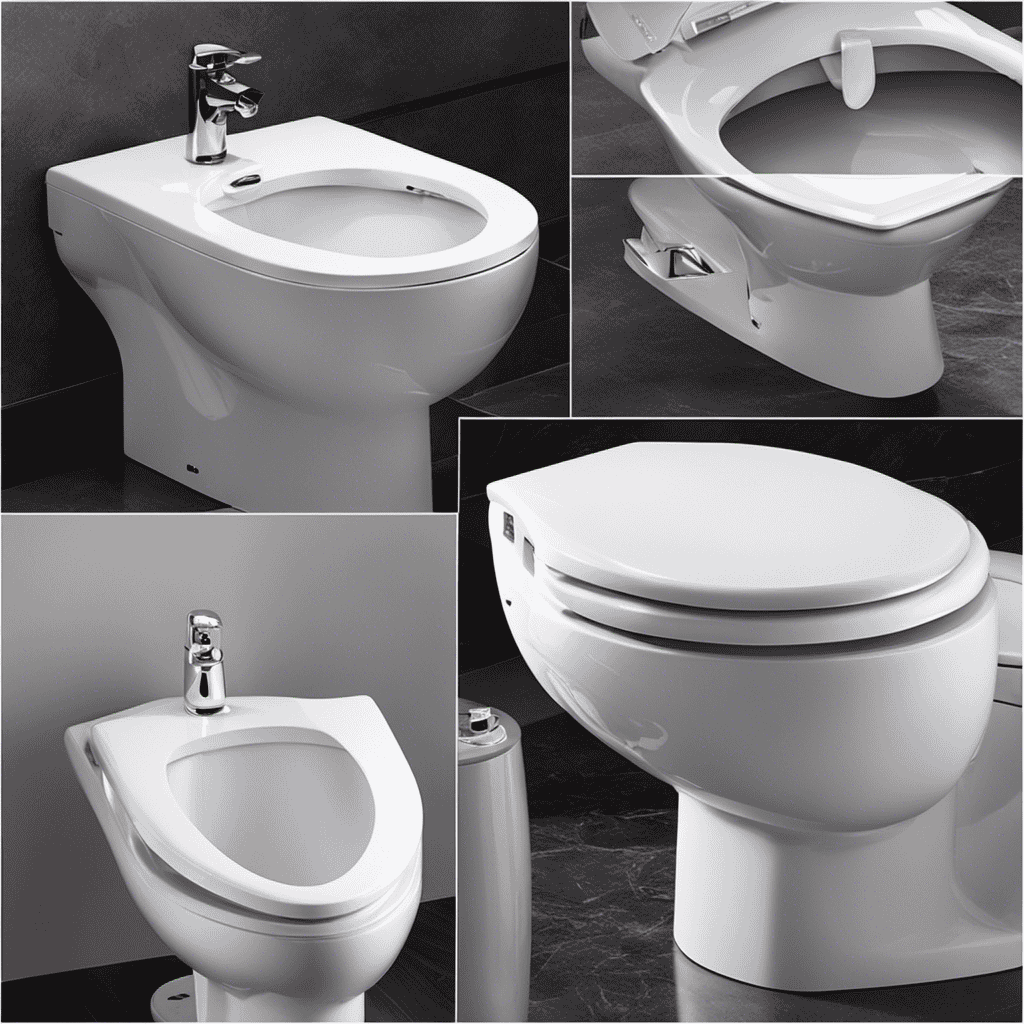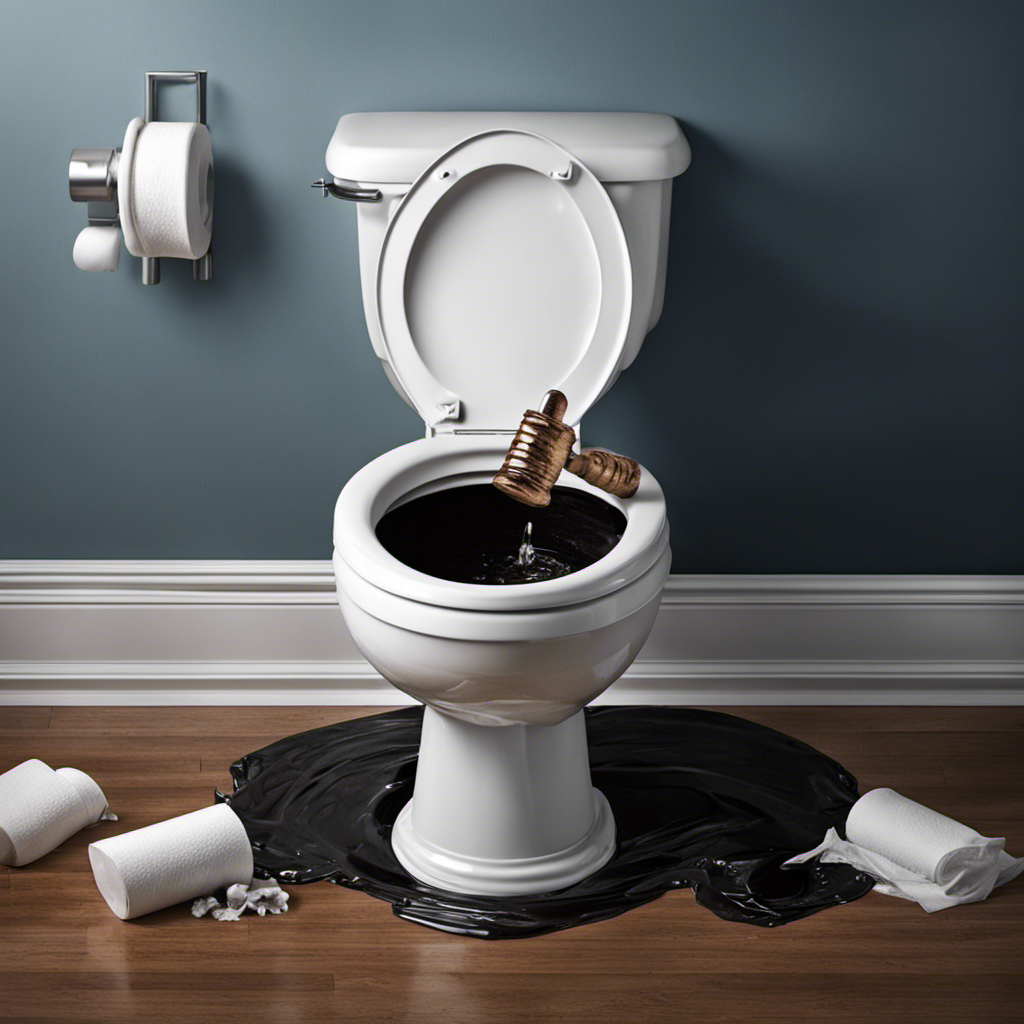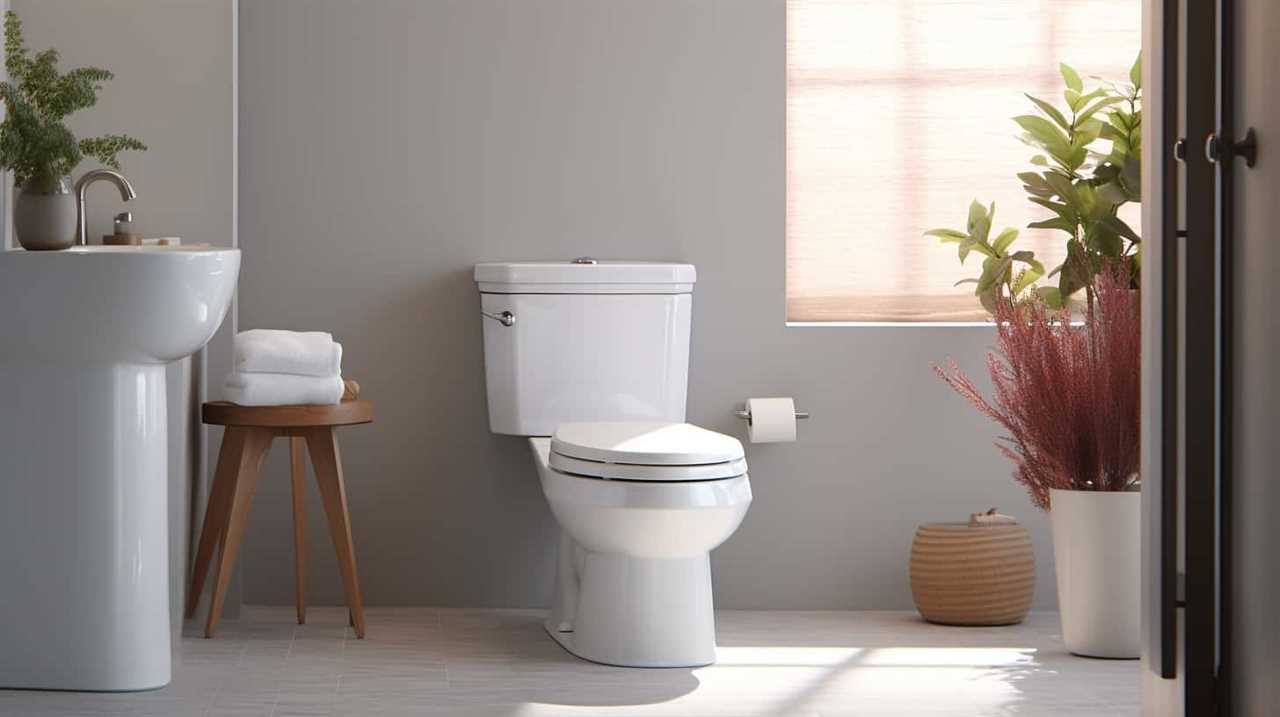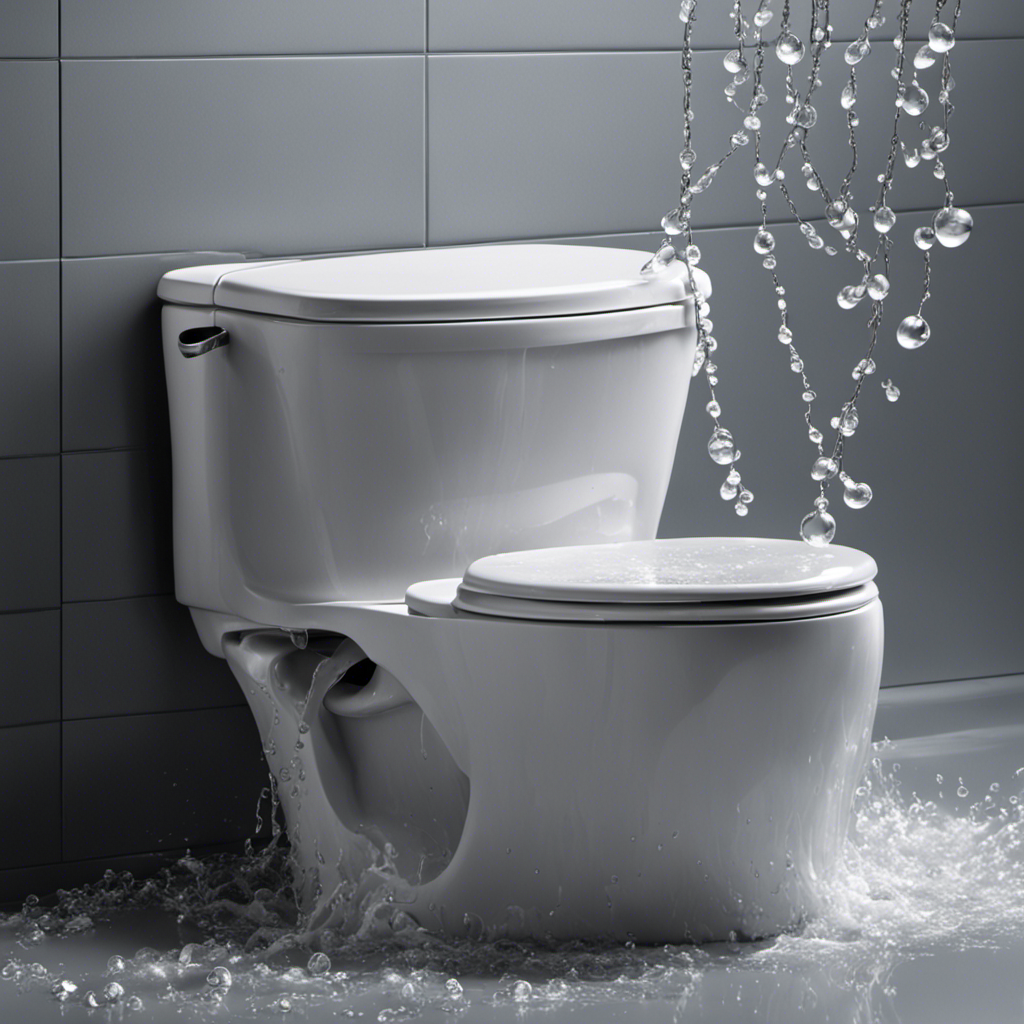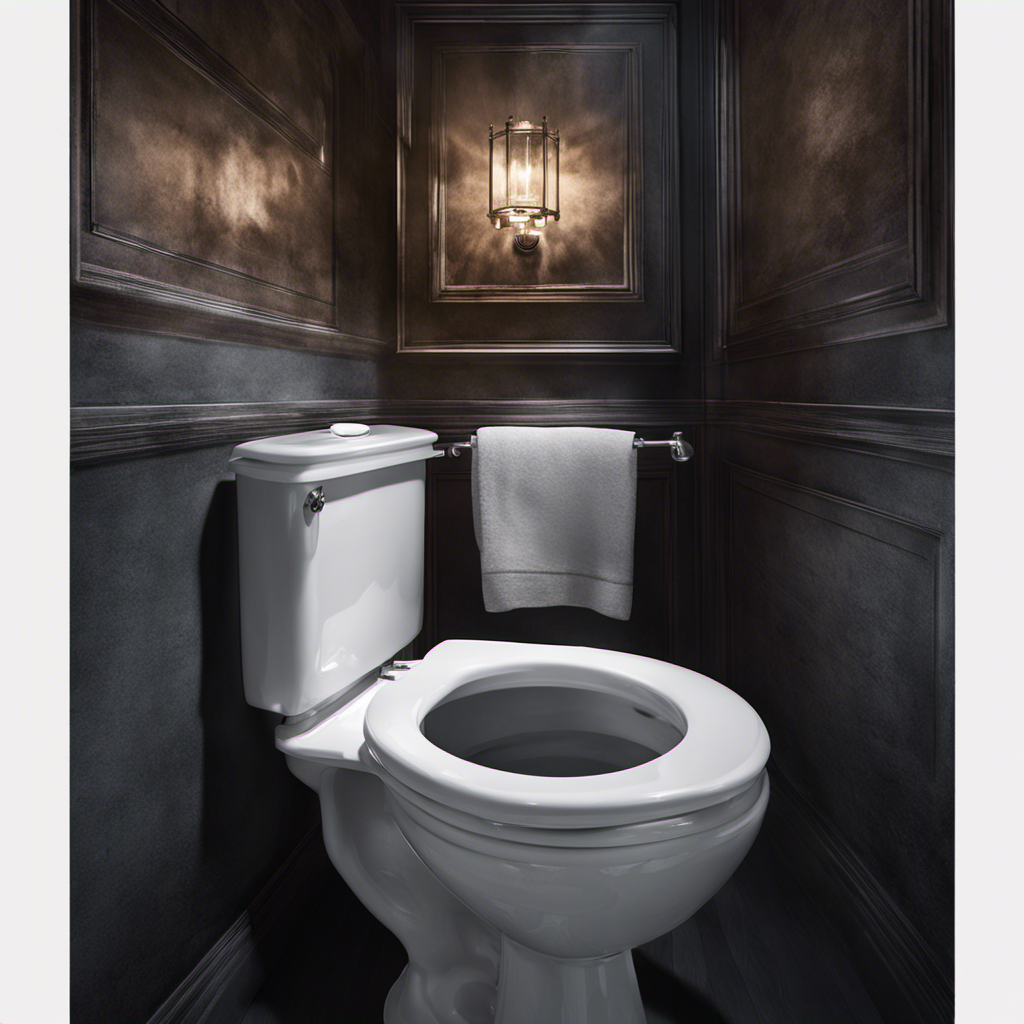As I step into the bathroom, I can’t help but imagine the comfort and cleanliness that awaits me with a bidet toilet seat.
In this step-by-step guide, I’ll show you how to install one yourself.
With just a few tools and materials, you’ll be on your way to experiencing the luxurious features of a bidet seat.
From preparing the toilet to connecting it to the water supply, I’ll walk you through the process with clear instructions and helpful tips.
Let’s get started!
Key Takeaways
- Bidet toilet seats provide a more thorough and hygienic cleansing experience compared to traditional toilet paper.
- They offer features like temperature control, water pressure adjustment, and air drying capabilities.
- Installing a bidet toilet seat involves removing the old seat, attaching the new seat using screws, connecting the water supply, and testing the seat’s features.
- It is important to follow the manufacturer’s instructions and seek professional help if needed during the installation process.
Understanding Bidet Toilet Seats
To understand bidet toilet seats, you’ll need to know how they work and their various features.
Bidet toilet seats offer a range of benefits, making them a popular choice for many households. They provide a more thorough and hygienic cleansing experience compared to traditional toilet paper, reducing the risk of infection and irritation. Additionally, bidet toilet seats can be adjusted to suit personal preferences, offering features like temperature control, water pressure adjustment, and even air drying capabilities.
There are different types of bidet toilet seats available in the market, including electric and non-electric options. Electric bidet seats offer more advanced features and are usually equipped with remote control functionality. Non-electric bidet seats, on the other hand, are simpler in design and rely on water pressure for operation. Understanding these different types and their features will help you choose the right bidet toilet seat for your needs.
Now that we’ve covered the benefits and types of bidet toilet seats, let’s move on to the tools and materials needed for installation.
Tools and Materials Needed for Installation
You’ll need a screwdriver, adjustable wrench, and Teflon tape for the installation. Here’s a step-by-step guide on how to install a bidet toilet seat:
-
Turn off the water supply: Locate the shut-off valve behind the toilet and turn it clockwise to shut off the water.
-
Remove the existing toilet seat: Use the screwdriver to unscrew the bolts securing the seat to the bowl. Lift the seat and set it aside.
-
Install the mounting bracket: Attach the mounting bracket to the toilet bowl using the bolts provided. Make sure it is secure and aligned.
-
Attach the bidet seat: Slide the bidet seat onto the mounting bracket until it clicks into place. Tighten the bolts with the adjustable wrench.
Preparing the Toilet for Bidet Seat Installation
To begin preparing the toilet for bidet seat installation, there are a few key points to consider.
-
Firstly, gather the necessary tools such as a screwdriver, pliers, and a wrench, along with the bidet seat kit and any additional materials specified in the manufacturer’s instructions.
-
Next, carefully remove the old seat by locating the bolts or screws securing it to the toilet bowl, and use the appropriate tools to loosen and remove them.
Required Tools and Materials
The tools and materials you’ll need for installing a bidet toilet seat include a wrench, a screwdriver, and a measuring tape. Here is a step-by-step guide on how to install a bidet toilet seat:
-
Gather the necessary tools and materials: wrench, screwdriver, measuring tape, bidet toilet seat kit.
-
Turn off the water supply to the toilet and flush to drain any remaining water in the tank.
-
Remove the existing toilet seat by unscrewing the bolts holding it in place.
-
Measure the distance between the bolt holes on the toilet bowl to ensure a proper fit for the bidet seat.
-
Attach the bidet seat to the toilet bowl using the provided bolts and nuts, following the manufacturer’s instructions.
-
Connect the bidet seat’s water supply hose to the toilet’s water supply valve.
-
Turn on the water supply and check for any leaks.
-
Test the bidet seat’s features and enjoy the benefits of a clean and hygienic bathroom experience.
Installing a bidet toilet seat is a straightforward process that can be completed with the right tools and materials. Follow these steps to ensure a successful installation and enjoy the convenience and cleanliness that a bidet seat provides.
Removing the Old Seat
Removing the old seat is a simple task that can be done using a screwdriver and a wrench.
To begin, locate the plastic covers at the back of the seat where it attaches to the toilet bowl. Use the screwdriver to gently pry off these covers.
Underneath, you will find the bolts that secure the seat in place. Use the wrench to loosen and remove these bolts.
Once the bolts are removed, lift the old seat straight up and off the toilet bowl. Take care not to damage the porcelain surface.
After removing the old seat, it is a good idea to clean the surface of the toilet bowl where the new seat will be installed. Use a mild cleaner and a soft cloth to remove any dirt or residue.
Now that the old seat is removed and the surface is clean, we can move on to installing the bidet seat mounting bracket.
Installing the Bidet Seat Mounting Bracket
Before we can begin installing the bidet seat mounting bracket, it’s important to understand the bracket installation process and how to secure the mounting bracket properly.
The bracket installation process involves a series of steps. First, you need to measure the toilet seat and mark the position of the bracket. Then, you’ll need to drill holes for the screws.
Once the bracket is in place, securing it is crucial to ensure a stable and secure bidet seat installation.
Bracket Installation Process
Start by attaching the bracket to the base of the bidet toilet seat using the provided screws. This step is crucial for ensuring proper bracket alignment and stability.
Here’s a step-by-step guide to help you through the process:
-
Position the bracket on the base of the bidet toilet seat, aligning the screw holes.
-
Take one of the screws provided and insert it through one of the screw holes on the bracket and into the corresponding hole on the base.
-
Use a screwdriver to tighten the screw securely, ensuring the bracket is firmly attached to the base.
-
Repeat steps 2 and 3 for the remaining screw holes, making sure to tighten each screw evenly.
Securing the Mounting Bracket
Now, let’s move on to how you can secure the mounting bracket to the base of the bidet toilet seat. Achieving proper alignment is crucial for a secure installation. Follow these step-by-step instructions to ensure a sturdy mounting:
- Position the mounting bracket on the base of the bidet toilet seat, aligning the holes on the bracket with the corresponding holes on the seat.
- Insert the bolts through the aligned holes, ensuring they are tightly secured.
- Use a wrench or screwdriver to tighten the bolts, making sure they are snugly fastened.
To provide a visual representation, here is a table showcasing the steps:
| Step | Action |
|---|---|
| 1 | Position the mounting bracket on the base |
| 2 | Insert bolts through aligned holes |
| 3 | Tighten bolts with a wrench or screwdriver |
Connecting the Bidet Seat to the Water Supply
To connect the bidet seat to the water supply, follow these steps:
-
Locate the water supply valve near the toilet and turn it off by rotating it clockwise.
-
Attach the T-connector to the water supply valve by screwing it on tightly.
-
Connect the bidet hose to the T-connector and tighten the connection.
-
Finally, attach the other end of the bidet hose to the bidet seat, ensuring a secure fit.
Once the bidet seat is connected, you can move on to adjusting and testing it. Make sure to adjust the water pressure correctly and check if the bidet seat is compatible with your toilet.
Adjusting and Testing the Bidet Seat
Once you’ve connected the bidet seat, it’s time to make adjustments and test it to ensure proper functionality.
Start by adjusting the water pressure to your preference. Locate the water pressure control knob on the bidet seat and turn it clockwise to increase the pressure or counterclockwise to decrease it.
Test the water pressure by sitting on the toilet and activating the bidet functions. Check if the water pressure is too high or too low and make further adjustments as needed.
Next, test each bidet function individually to ensure they are working correctly. Activate the posterior wash, feminine wash, and oscillating wash functions and check if the water spray is directed properly and at the desired pressure.
Troubleshooting Common Installation Issues
If you’re experiencing any issues during the installation process, a common troubleshooting step is to check the water supply valve and ensure it is fully open.
Here are some troubleshooting tips to help you resolve common installation issues:
-
Check the water supply valve: Make sure the valve is fully open to allow water flow to the bidet seat. Sometimes, the valve may be partially closed, leading to low water pressure or no water flow.
-
Inspect the water connection: Ensure that the water supply hose is securely connected to both the bidet seat and the water supply valve. Loose connections can result in leaks or water flow problems.
-
Verify the power source: If your bidet seat requires electricity, make sure it is properly connected to a power outlet. Check the power cord for any damage or loose connections.
-
Double-check the seat installation: Ensure that the bidet seat is securely attached to the toilet bowl. Loose or improper installation can cause discomfort or functionality issues.
Conclusion
In conclusion, installing a bidet toilet seat is a simple and straightforward process that can greatly enhance your bathroom experience. By following the steps outlined in this article, you can easily transform your standard toilet into a luxurious and hygienic bidet.
From understanding bidet toilet seats to troubleshooting common installation issues, this guide has provided you with the necessary information and steps to successfully install your bidet seat.
So go ahead, take the plunge, and enjoy the comfort and cleanliness that a bidet toilet seat can provide.
